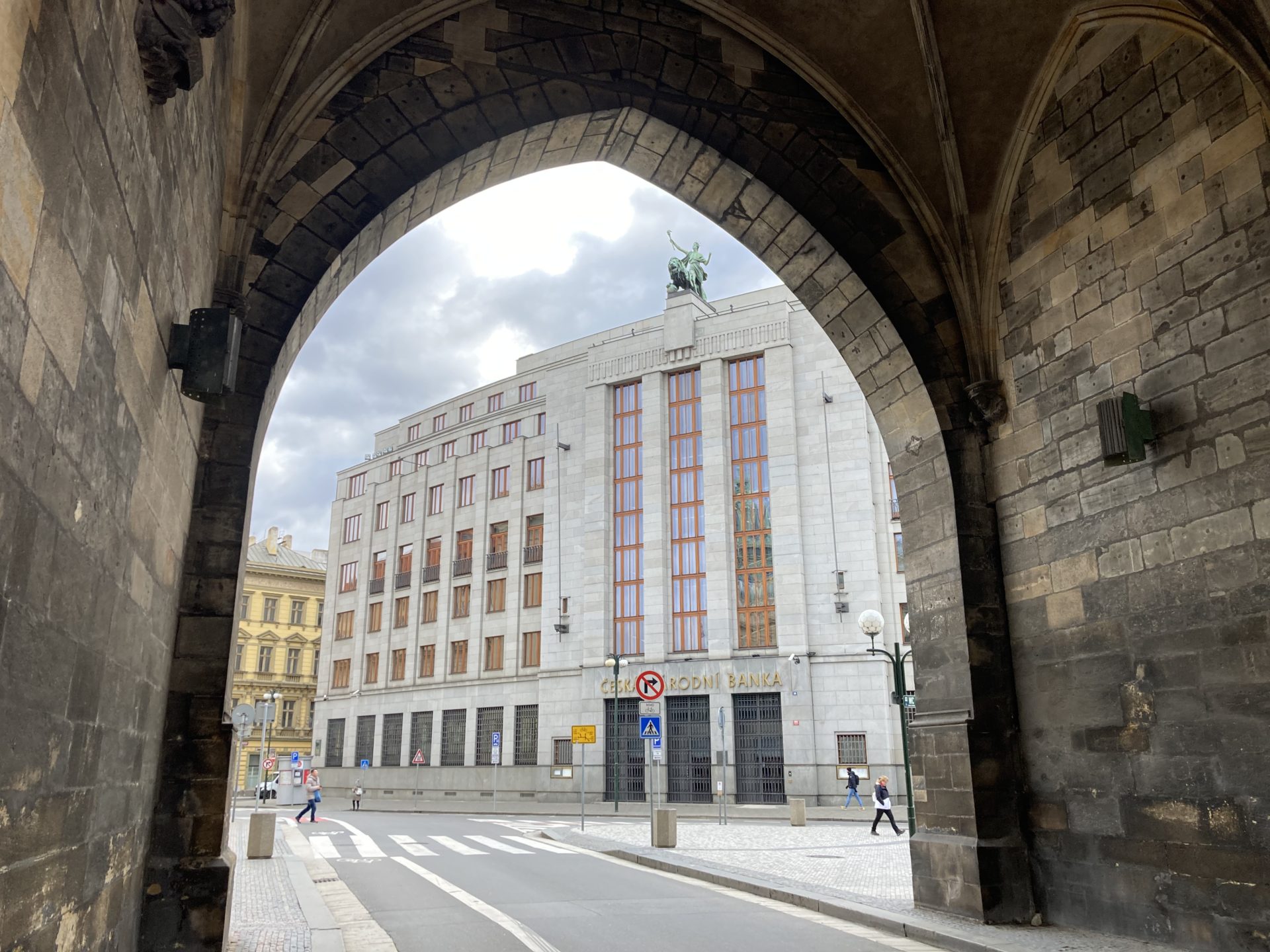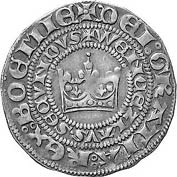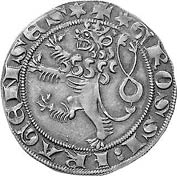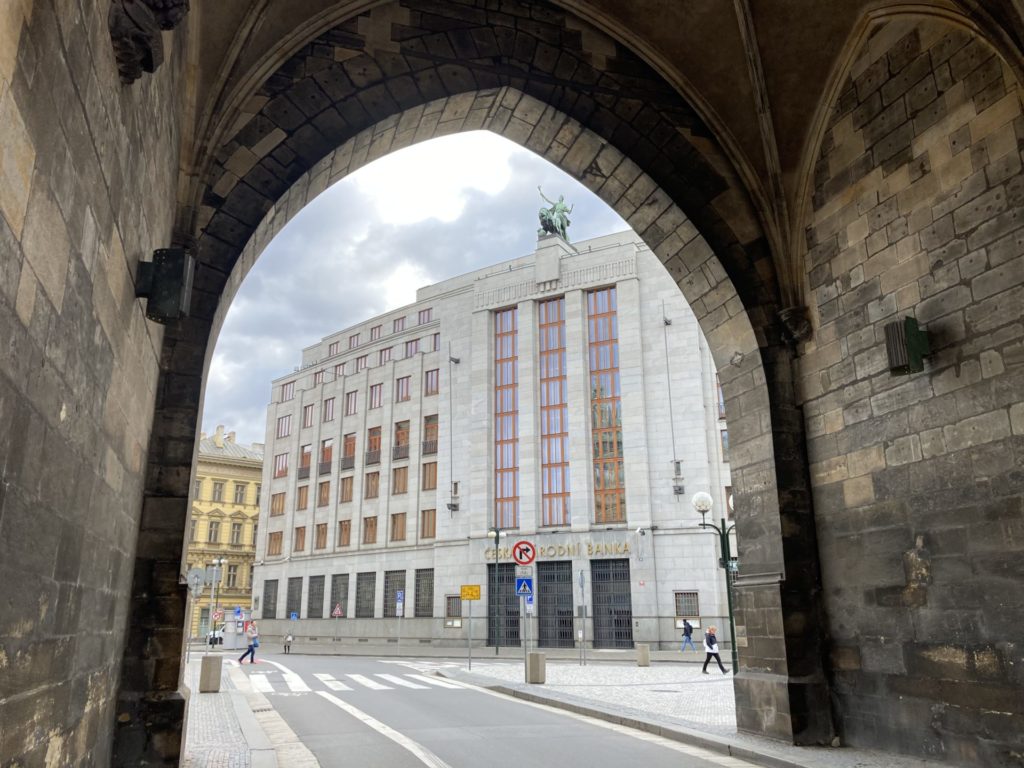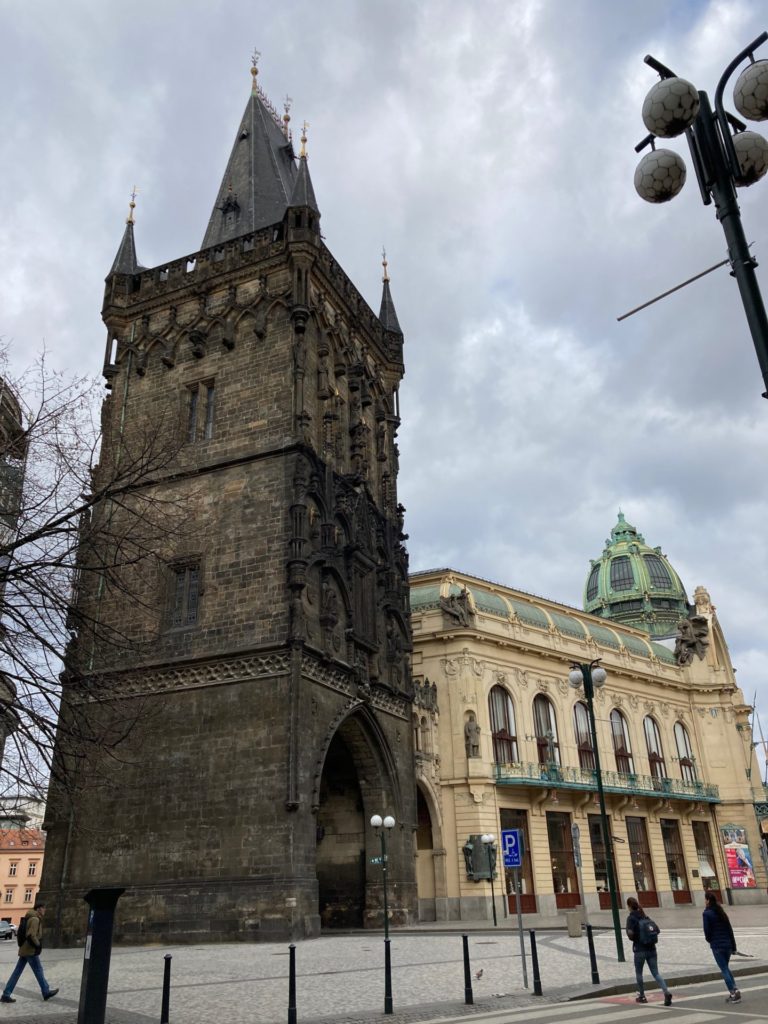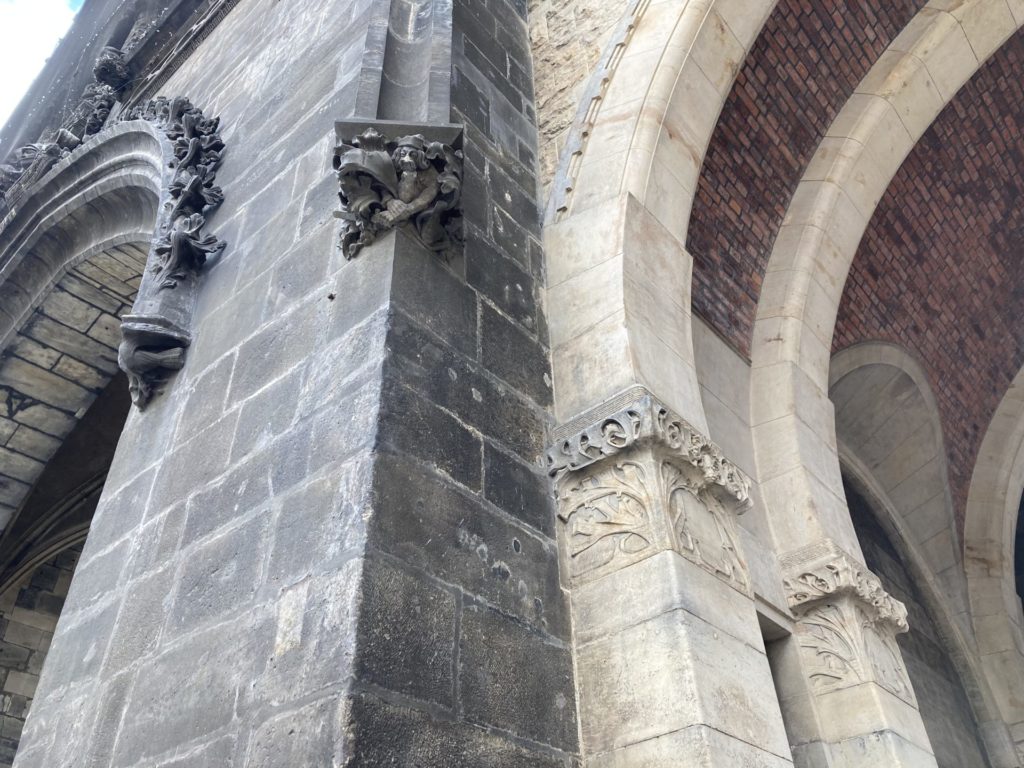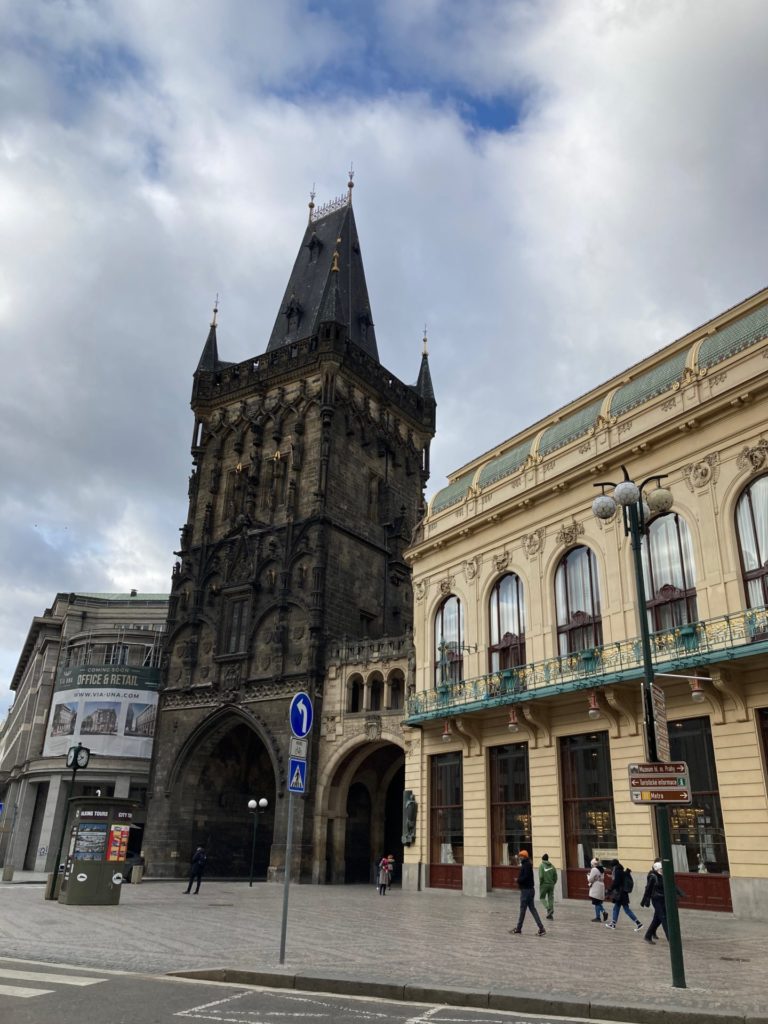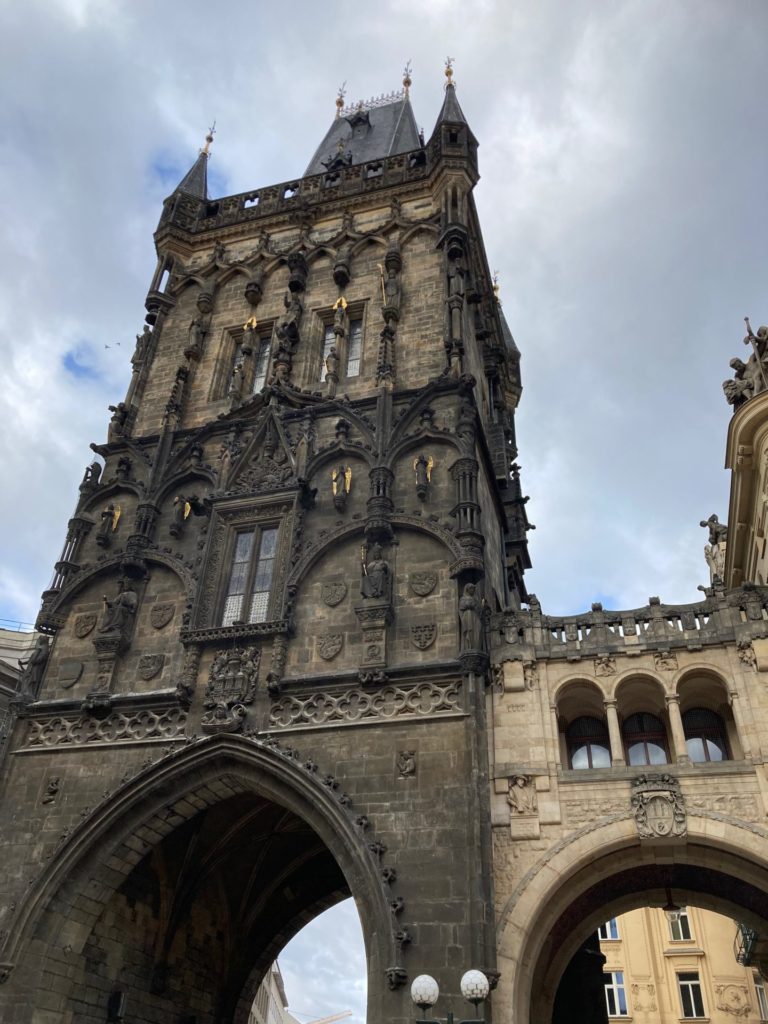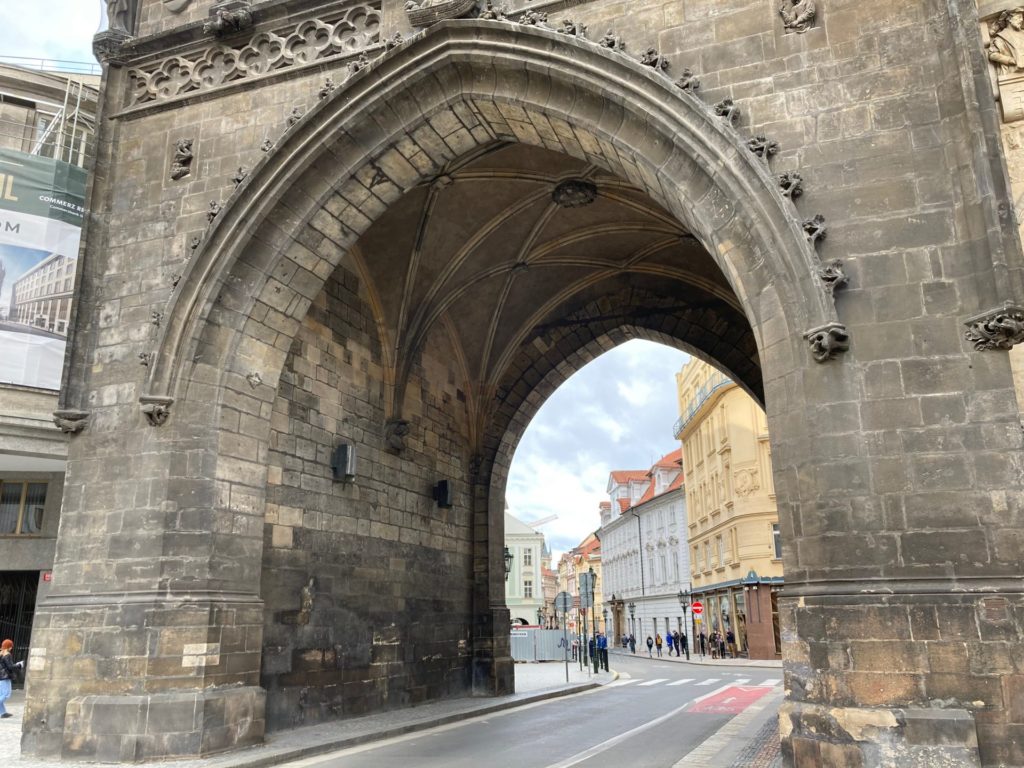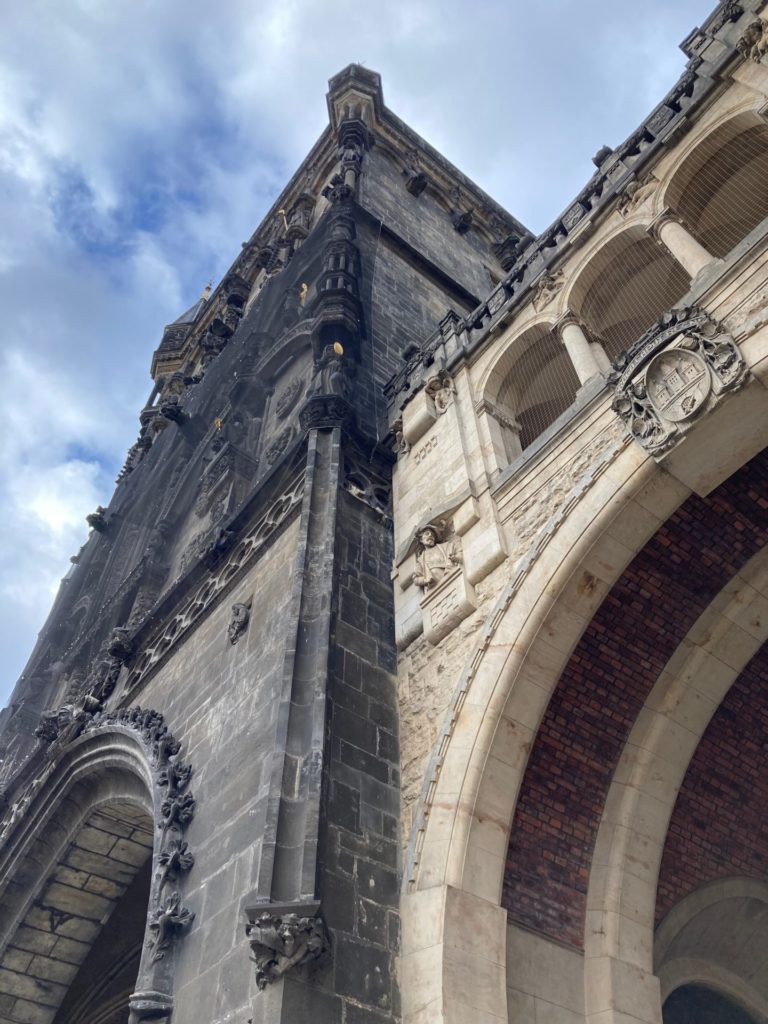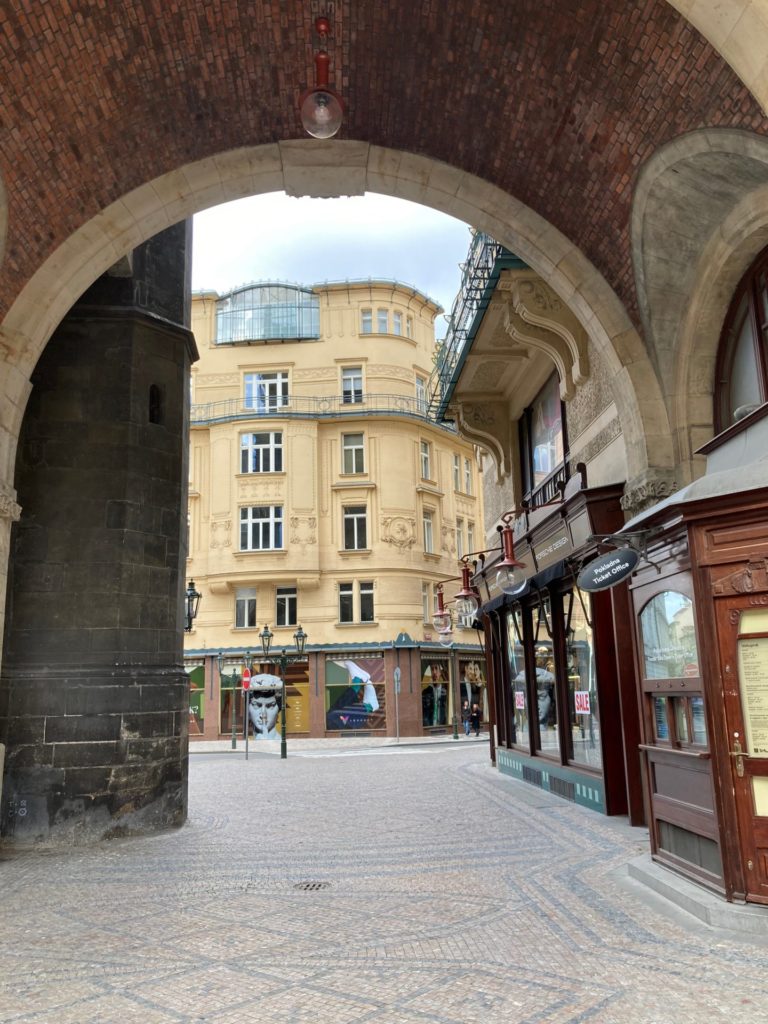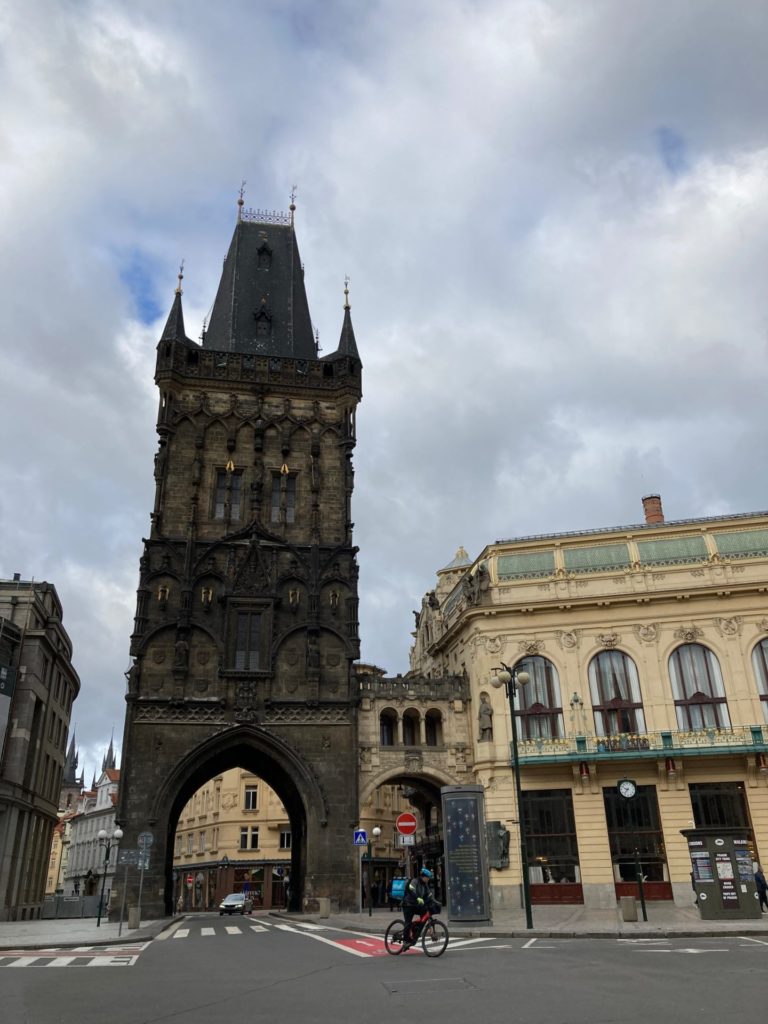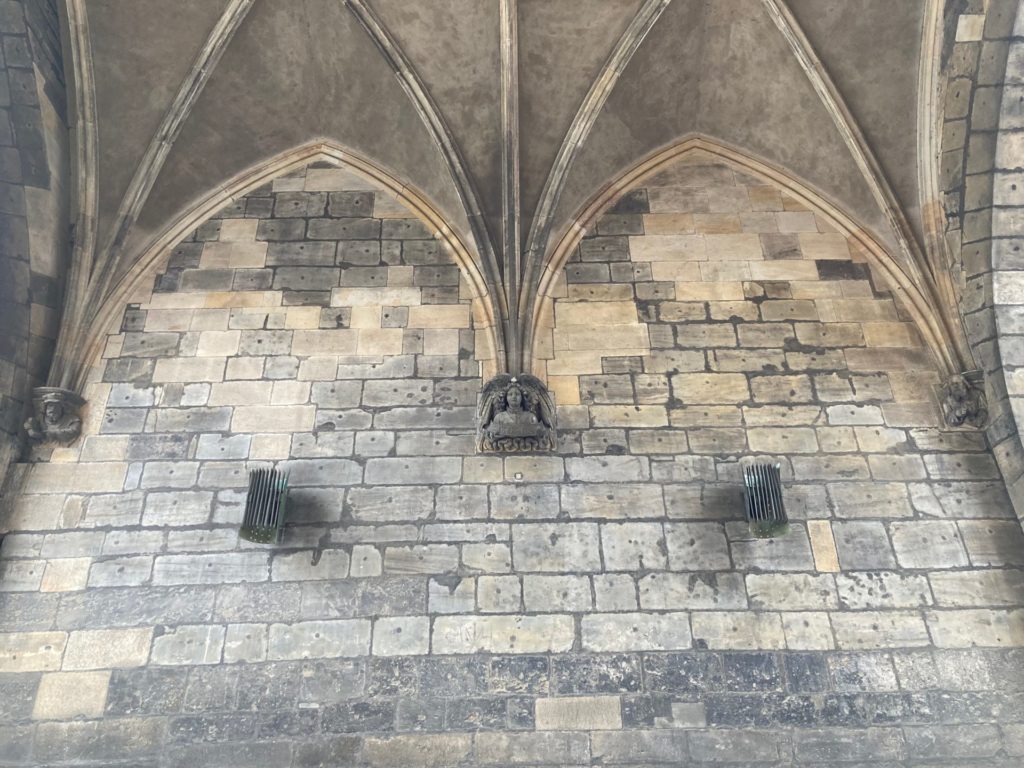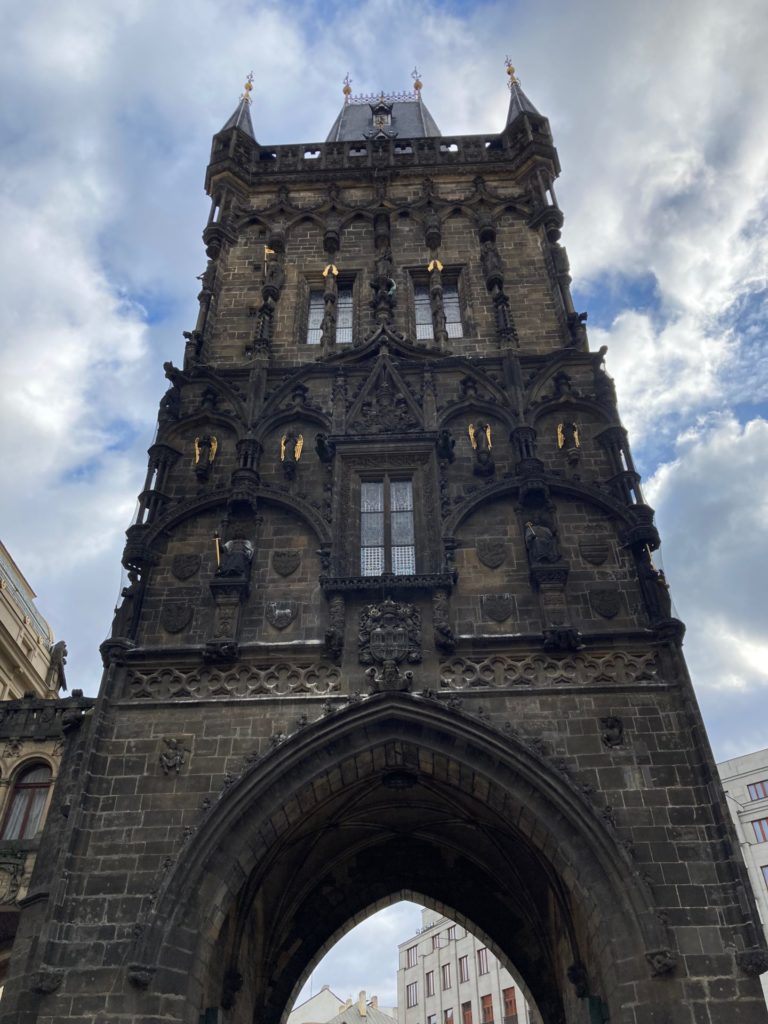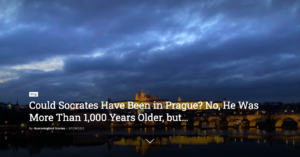The Gothic Powder Tower is the beginning of the Royal Route leading to Prague Castle. The coronation processions of the Czech kings used to follow this road. From the place where the Municipal House is today (to which the Powder Gate is connected) and where the King’s Court, the seat of Czech kings, used to be in the Middle Ages.
The Royal Route then continues along Celetná Street, through the Old Town Square around the Old Town Hall, from there through the Little Square, along Charles Street around the Clementinum, through the Knights of the Cross Square, across the Charles Bridge, then along the Bridge Street to the Lesser Town Square, via Neruda Street and Ke Hradu Street, and then through Hradčanské Square to Prague Castle to the St.Vitus Cathedral. (However, by the 17th century, the procession had to ascend to Pohořelec first, because Ke Hradu Street did not yet exist).
The Powder Gate was important not only in the direction “from the Castle” but also out of the city. This was an important route from Kutná Hora, where silver was mined, which was used to mint the most famous Czech coin, the Prague Groschen, since 1300. It was an important currency in the whole of Central Europe, because at that time the Czech Kingdom was one of the most economically powerful countries in Europe.
At that time, there was a tower on the site of today’s Powder Gate, which – because of the road to Kutná Hora – was called Horská. When the town grew and the defensive walls and towers lost their importance and the tower fell into disrepair, it was also called Odraná (Shabby).
Construction of the New Gate, as it was also called at one time, began in March 1475. And its importance is also documented by the fact that its foundation stone was laid in the eastern corner of the excavated foundations of the building by King Vladislav Jagellonský himself.
The gate has been called Powder since the 18th century, because there was a gunpowder warehouse in it at that time.
By the way – the main builder of the gate was sculptor and stonemason Matěj Rejsek. His surname is derived from the fact that he could draw well, including technical drawings. (To draw in Czech is “rýsovat”, slang “rejsovat”, from which “rejsek” is derived.)
If you walk through the Powder Gate into Celetná Street and turn around, there is a bust of him above the arch, with the inscription: ‘Raysek de Prostieyov Baccalareus Pragensis 1477…’.













